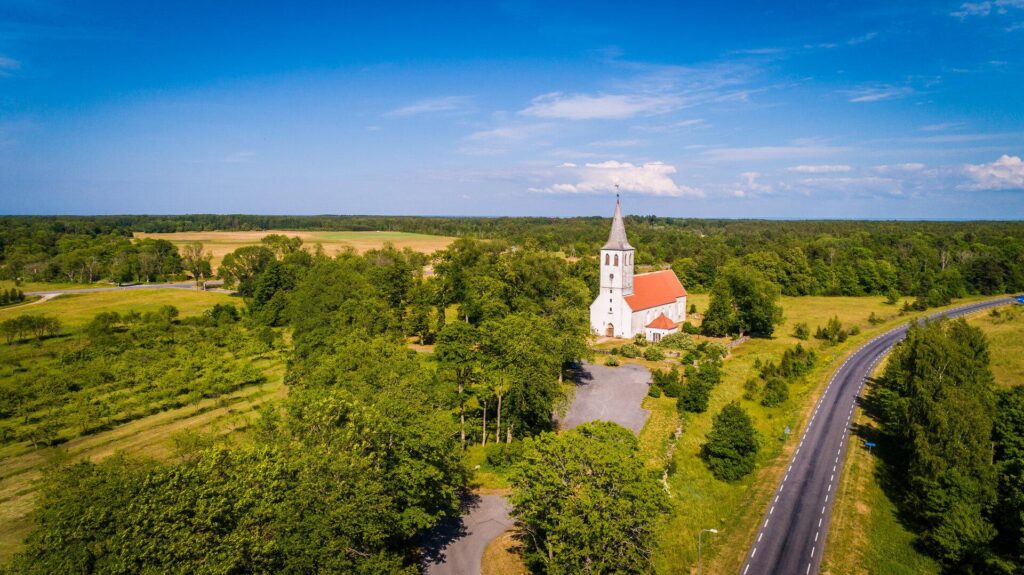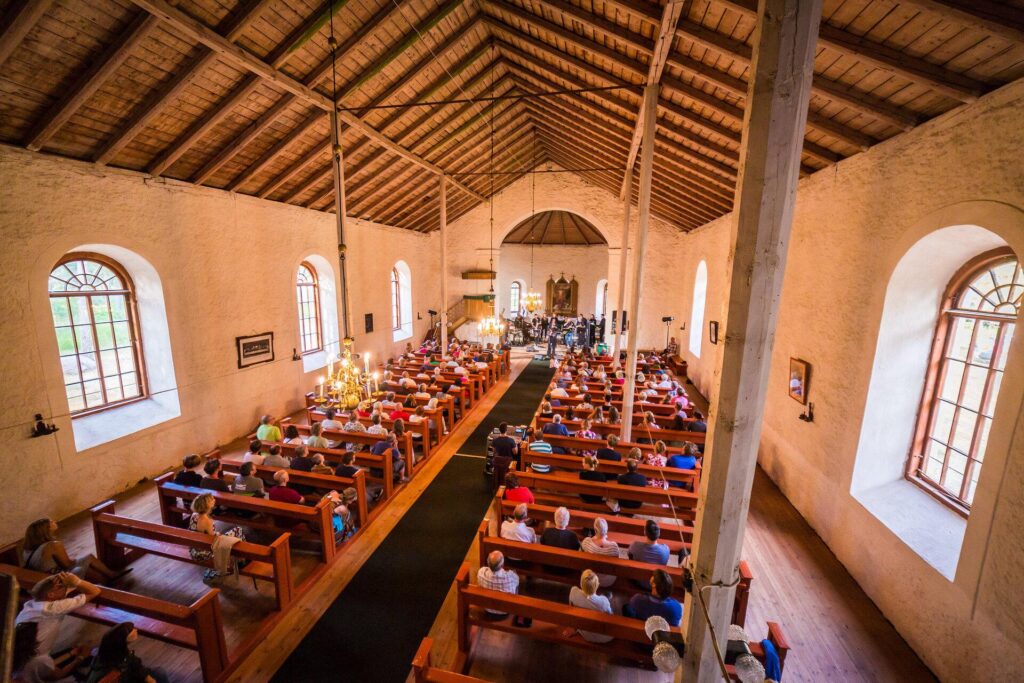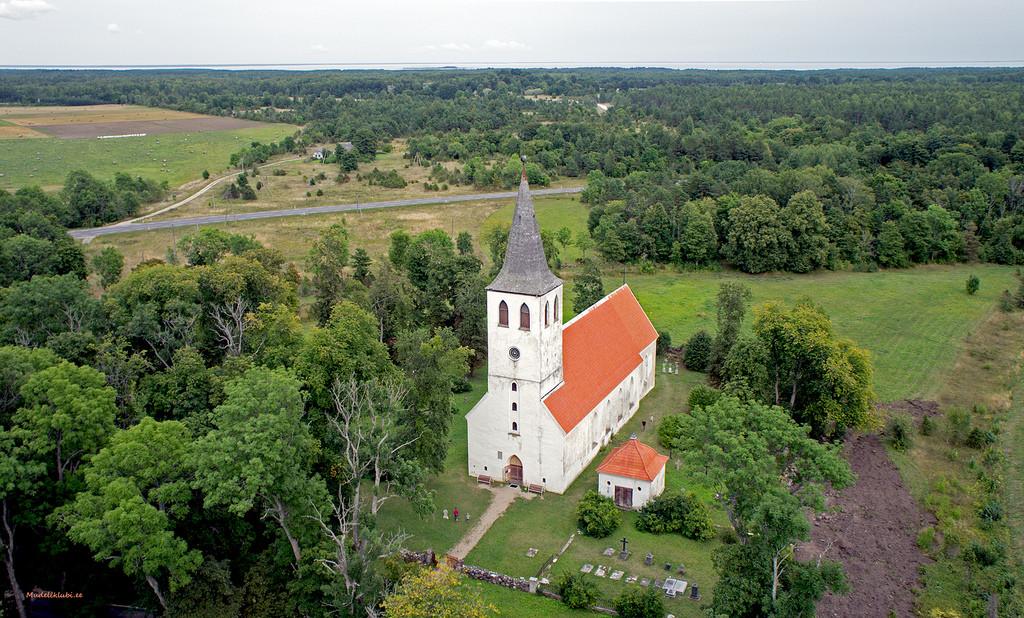Pühalepa Church

The Pühalepa Church is Hiiumaa’s oldest stone church. In 1255, the German Order started the construction of a stone fortress-church. Initially lacking a steeple, the arched stone church was completed in the 14th century; construction of the steeple started in 1770. After it renovation in the 19th century, Crosses of Malta were painted on the walls that are primarily associated with the membership of the Ungern-Sternberg family members in this Order.
Interesting fact:
One of the inauguration crosses has survived on the wall of the choir room. An unusual stone pulpit was given to the Pühalepa Church by the Hiiesaare manor lords, the Gentschiens in 1636.The burial chapel of the von Stenbock family is in the churchyard.
The PüThe patron Saint of this church is Saint Laurentius – Protector against fire and guardian of the poor and destitute.
This first stone church was built before 1260 and was considered a safe haven. The church was vaulted in the end of 1200s – early 1300s with three vaults.
The initial rectangular size of the church was 9 x 22 m with no windows on the north side. This Gothic style church replicates those found on Gotland, Sweden.
The earliest document that mentions the parish Pühalepa is from 1470.
The early building materials were mainly fieldstone with the outer corners faced with limestone and with no visible base. Initially, there was also no sacristy or steeple.
In 1575, during the Livonian war, the church was destroyed to ruins by the Russians attacking from Haapsalu.
In the early 1600s was the church rebuilt. A new triumphal arch and gables were added.
The late Renaissance stone pulpit, designed and constructed by Joachim Winter has been in the church since 1636.
In the second half of the 18th century, the church was thoroughly renovated. The steeple, sanctuary and the choir loft, all got their current shape during this building period. New neo-gothic windows were opened in the north wall and a large steep pitched window was added to the choir loft. The total length of the building was now 41.5 x 13 metres as it is today. In 1874, the steeple height was topped and a neo-gothic cupola added to cap its current height of 38.1 metres.
The churchyard is home to the two remaining, partly preserved sun crosses of Hiiumaa and Saaremaa, a disk-shaped cross, the small baroque cemetery chapel of the foundress of the Suuremõisa manor house, Ebba Margaretha Stenbock (1704−1775), tombstones for Suuremõisa’s gentlemen and other interesting grave markers from the 18th and 19th century.
In the post-war years, the church was used for storage.
Gallery
It is a waypoint on the journey
You might also be interested in:




